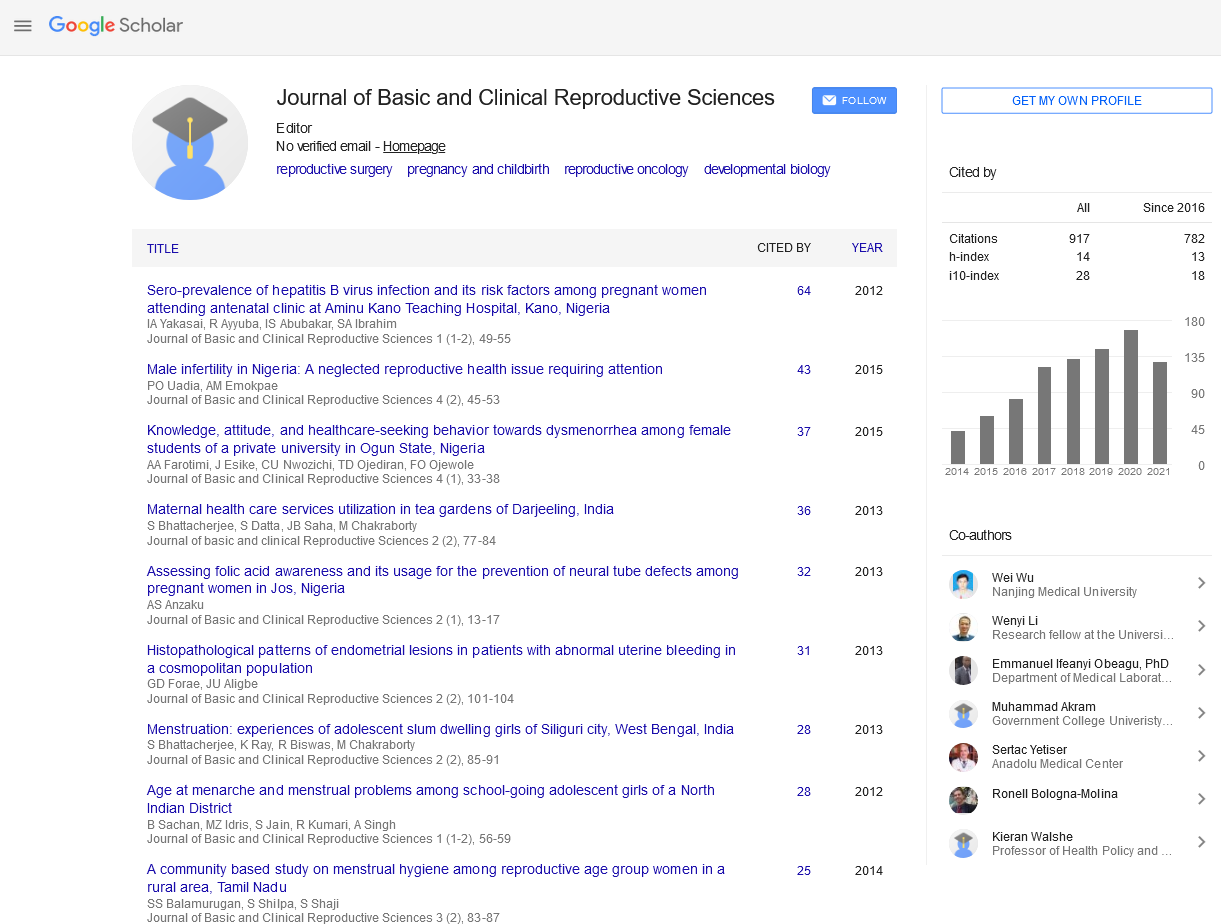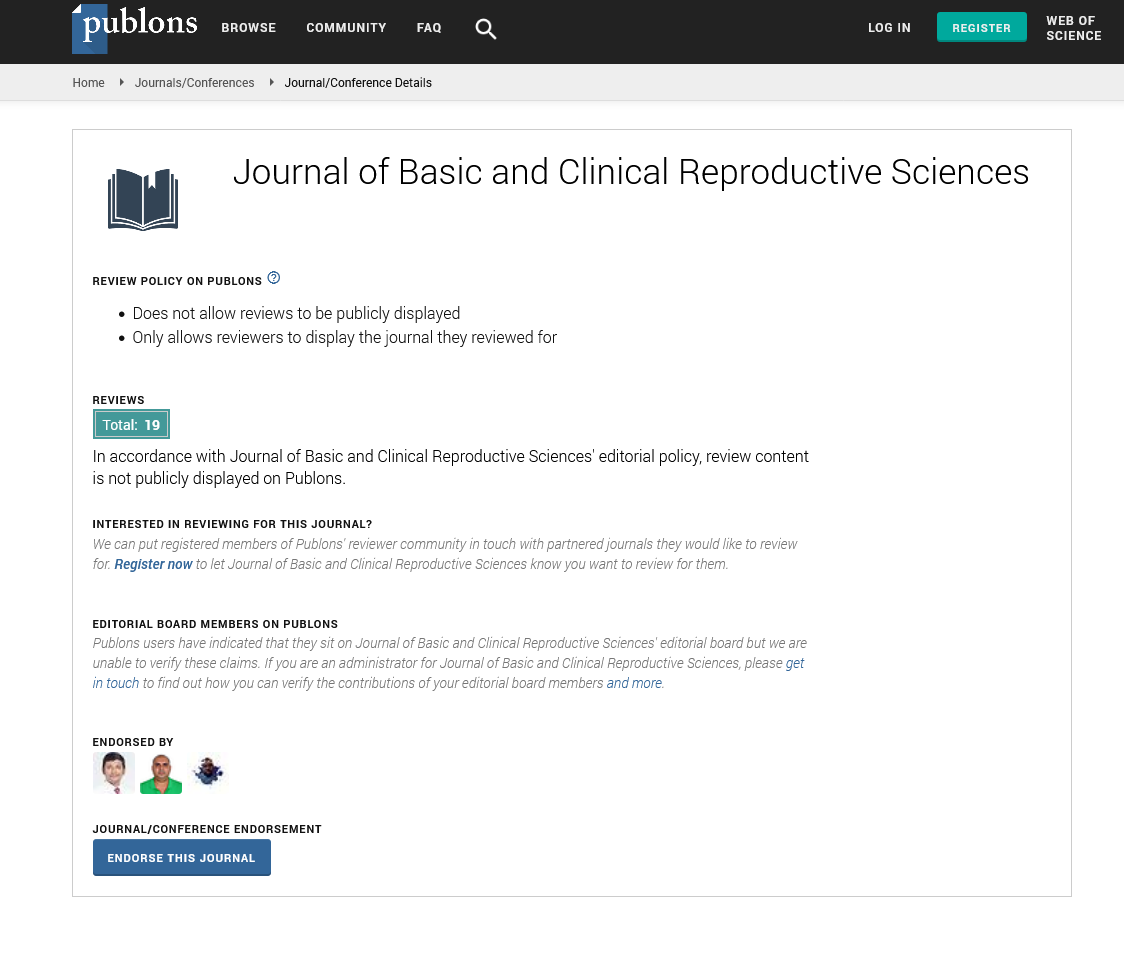Commentary - Journal of Basic and Clinical Reproductive Sciences (2023) Volume 12, Issue 3
Premature Ovarian Failure: An Overview of the Condition
Received: 24-May-2023, Manuscript No. JBCRS-23-102196; Editor assigned: 26-May-2023, Pre QC No. JBCRS-23-102196 (PQ); Reviewed: 09-Jun-2023 QC No. JBCRS-23-102196; Revised: 16-Jun-2023, Manuscript No. JBCRS-23-102196 (R); Published: 23-Jun-2023
This open-access article is distributed under the terms of the Creative Commons Attribution Non-Commercial License (CC BY-NC) (http://creativecommons.org/licenses/by-nc/4.0/), which permits reuse, distribution and reproduction of the article, provided that the original work is properly cited and the reuse is restricted to noncommercial purposes. For commercial reuse, contact reprints@pulsus.com
Description
Premature Ovarian Failure (POF), also known as primary ovarian insufficiency, is a condition that affects women under the age of 40, leading to a cessation of ovarian function and a decline in fertility. While it is a relatively rare condition, affecting approximately 1% of women, its impact on reproductive health and overall well-being can be significant. This gives glance on the causes, symptoms, and available treatment options for premature ovarian failure.
Causes of premature ovarian failure
Premature ovarian failure can occur due to various factors, including genetic, autoimmune, and environmental influences. Some known causes includes as follows
Genetic factors: Certain genetic abnormalities, such as Turner syndrome, Fragile x syndrome, and other chromosomal abnormalities, can contribute to the development of POF.
Autoimmune disorders: In some cases, the body’s immune system mistakenly attacks the ovaries, leading to their dysfunction. Autoimmune diseases like Hashimoto’s thyroiditis and Addison’s disease have been associated with an increased risk of POF.
Chemotherapy and radiation therapy: Cancer treatments involving chemotherapy and radiation can damage the ovarian tissue, leading to premature ovarian failure. The extent of damage depends on the type and dosage of the treatments received.
Environmental factors: Exposure to toxins, such as certain chemicals, pesticides, and cigarette smoke, may increase the risk of POF. However, further research is needed to establish a clear causal link.
Symptoms of premature ovarian failure
Premature ovarian failure can present with various symptoms, which may vary from woman to woman. Some common signs and symptoms includes are as folows
Irregular or absent menstrual periods: One of the primary indicators of POF is a disruption in the regularity of menstrual cycles. Women may experience irregular periods or the complete absence of menstruation.
Mood swings and depression: Hormonal fluctuations associated with premature ovarian failure can contribute to mood changes and feelings of depression.
Infertility: The most significant impact of POF is the decline in fertility, making it difficult for affected women to conceive naturally. However, it is important to note that pregnancy can still be achieved with assisted reproductive techniques in some cases.
Treatment options
While premature ovarian failure cannot be reversed, there are treatment options available to manage the associated symptoms and improve quality of life.
Hormone Replacement Therapy (HRT): Estrogen replacement therapy can help relieve symptoms like vaginal dryness, and mood swings. It can also provide protection against osteoporosis and other complications associated with low estrogen levels.
Fertility preservation: Women diagnosed with POF who desire to have children can opt for fertility preservation techniques such as oocyte cryopreservation (egg freezing) before the complete loss of ovarian function.
Psychological support: Dealing with infertility and the loss of reproductive potential can be emotionally challenging. Counseling and support groups can provide invaluable assistance in managing the psychological impact of premature ovarian failure.
Bone health management: Estrogen deficiency increases the risk of osteoporosis. Therefore, it is crucial for women with POF to ensure an adequate intake of calcium and vitamin D, along with regular exercise to maintain bone health.
Conclusion
Premature ovarian failure is a distressing condition that can significantly impact a woman’s reproductive health and emotional well-being. By understanding the causes, recognizing the symptoms, and exploring available treatment options, affected women can make informed decisions about managing the condition and preserving their fertility. With ongoing advancements in reproductive medicine, there is hope for women with POF to achieve their desired goals of starting a family or living a fulfilling life post-diagnosis. If one suspect’s that if anyone might experiencing symptoms of premature ovarian failure, it is necessary to consult with a healthcare professional for an accurate diagnosis and appropriate management.


